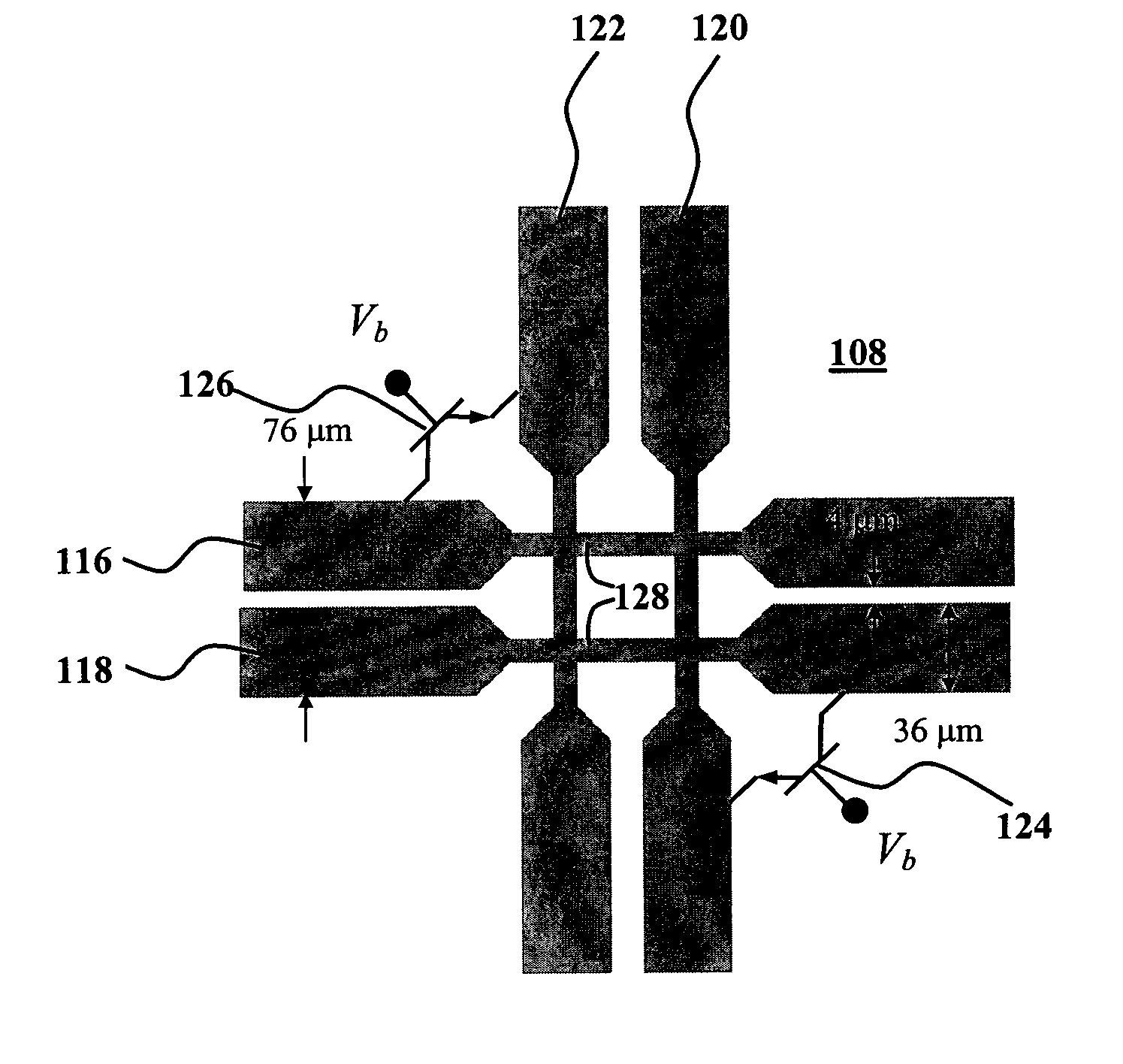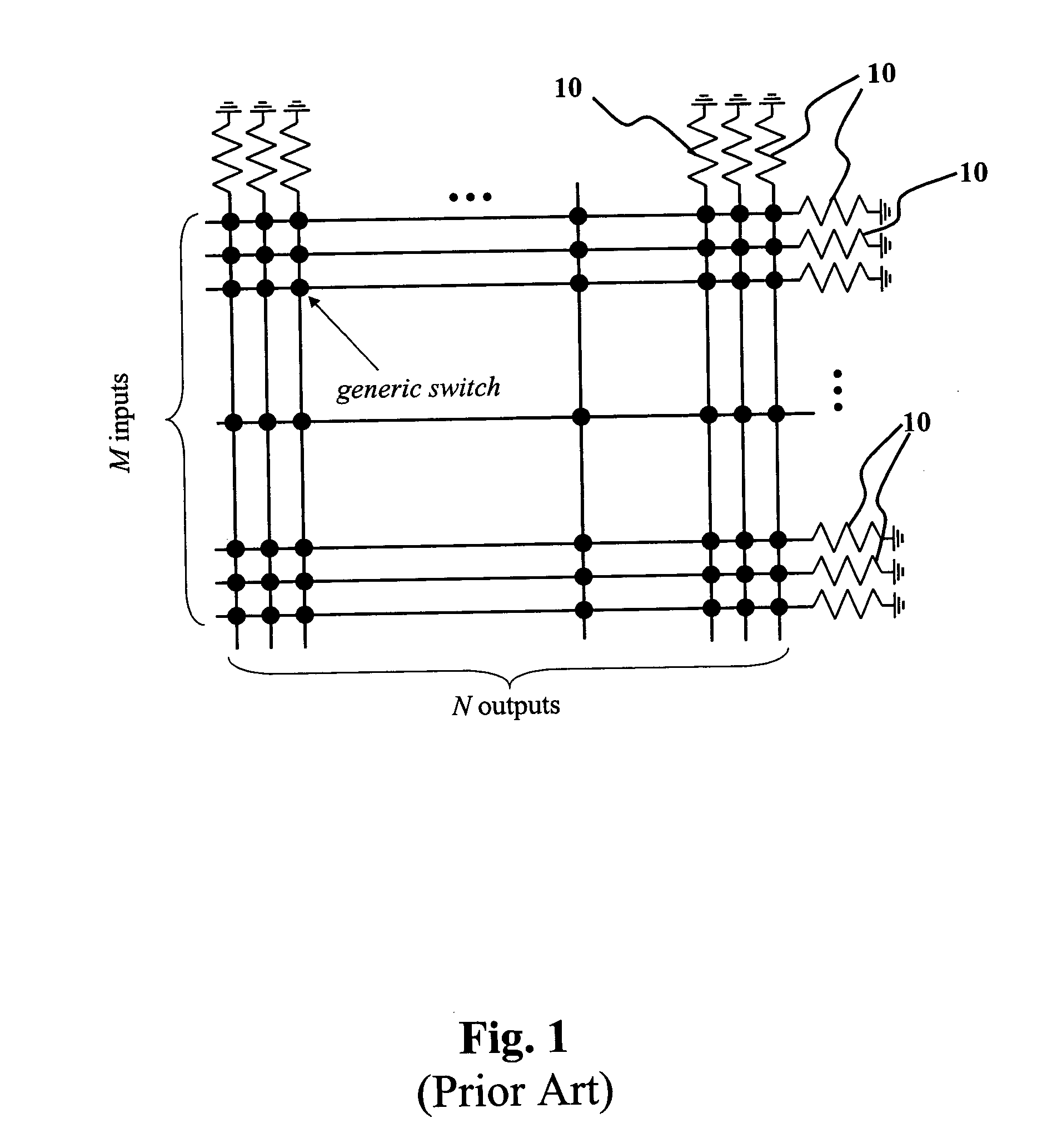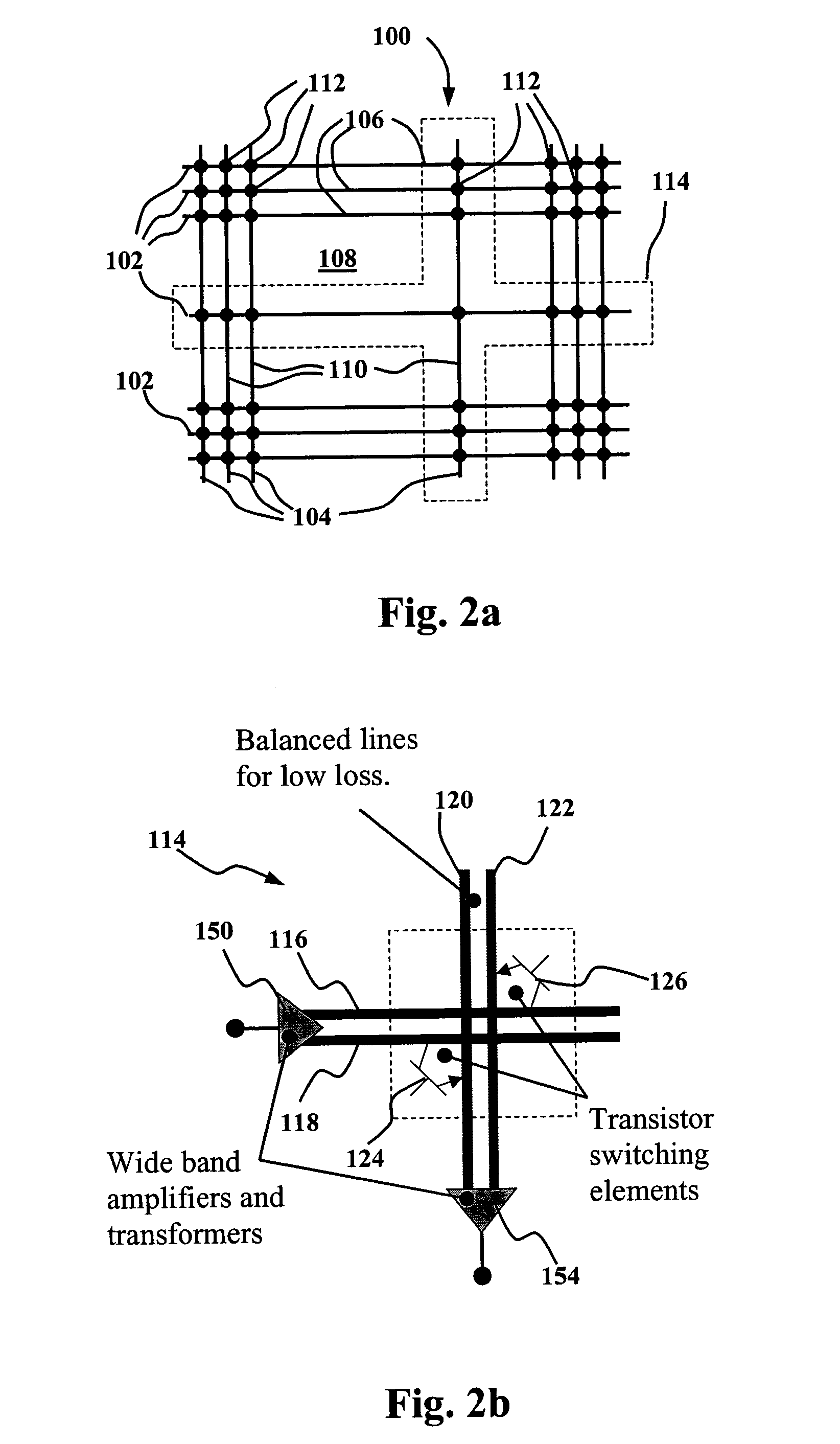High speed cross-point switch using SiGe HBT technology
a high-speed cross-point switch and hbt technology, applied in the field of high-speed cross-point switches, can solve the problems of reducing the theoretical insertion loss of a high-frequency cross-point switch, and affecting the operation of the high-frequency passive cross-point switch. , to achieve the effect of reducing the theoretical insertion loss, reducing the concentration of electric fields, and increasing the dielectric loss
- Summary
- Abstract
- Description
- Claims
- Application Information
AI Technical Summary
Benefits of technology
Problems solved by technology
Method used
Image
Examples
Embodiment Construction
[0021]With reference to FIG. 2A, an M×N switch matrix indicated generally at 100 has M inputs (rows), 102, and N outputs (columns), 104. The M inputs, 102, introduce one or more signals to be switched onto a plurality of conductive microstrips, 106, which are arranged to extend in parallel in one direction over the face of a substrate, 108, such as a semiconductor substrate. A second set of conductive microstrips, 110, run in parallel over the face of the substrate, 108, at an angle to microstrips, 106, preferably at 90° thereto. A plurality of switching elements, 112, are formed at respective intersections of the input microstrips, 106, and the output microstrips, 110. These switching elements, 112, are selectively operated to connect ones of the inputs, 102, to ones of the outputs, 104, thereby being capable of switching signals input on the inputs, 102, to the outputs, 104, as desired.
[0022]The M×N switch matrix, 100, as shown in FIG. 2A is conceptual in that a single microstrip,...
PUM
 Login to View More
Login to View More Abstract
Description
Claims
Application Information
 Login to View More
Login to View More - R&D
- Intellectual Property
- Life Sciences
- Materials
- Tech Scout
- Unparalleled Data Quality
- Higher Quality Content
- 60% Fewer Hallucinations
Browse by: Latest US Patents, China's latest patents, Technical Efficacy Thesaurus, Application Domain, Technology Topic, Popular Technical Reports.
© 2025 PatSnap. All rights reserved.Legal|Privacy policy|Modern Slavery Act Transparency Statement|Sitemap|About US| Contact US: help@patsnap.com



